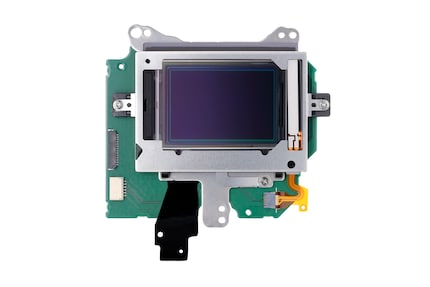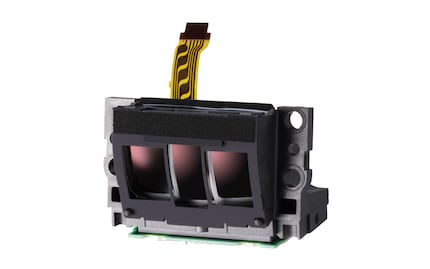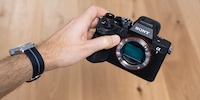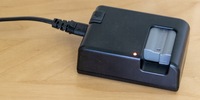

What the Canon EOS 1D X Mark III reveals about the future of cameras
Now that the EOS 1D X Mark III professional sports camera is out, we know: The best Canon camera is still an SLR. What does this mean for the near future?
Canon presented the EOS 1D X Mark III at the CES, a professional camera for fast action. Very few people will consider buying the camera. It is simply too expensive for that (RRP 7249 francs / 7299 euros). Nevertheless, its introduction is interesting because it provides information about the general development.

Impressive performance
It's pretty impressive what Canon has packed into the new flagship. Here is a brief summary of the most important features:
- 16 frames per second with optical viewfinder, mechanical shutter and tracking of autofocus and light metering. The Mark II already managed this, but without AF/AE tracking.
- More than 1000 images in RAW+JPEG at full continuous shooting speed. This is made possible by a very large buffer memory and the very high write speed of the CFexpress memory cards (800 MB/s).
- New autofocus with 191 AF fields, 155 of which are cross-type sensors. 525 focus zones are available in Live View mode.
- Subject tracking with deep learning technology. This is designed to recognise the faces of athletes, for example, even if they are covered by glasses or a helmet visor.
- Sensitivity of 102,000 ISO in normal operation, expandable to 819,200 ISO.
- Internal video recording with 5.5K and 12 bit in RAW format. So far, only Canon's professional camcorders can do this.
- Movie Digital IS stabilisation for video recording, which prevents camera shake when shooting freehand - another function that is otherwise only found in high-end cinema cameras such as the EOS C500 Mark II.
- The new HEIF file format, which saves 10-bit colour depth to save space and is therefore superior to the old JPEG (although you can of course still save in JPEG)
And all this in an SLR camera. Why is that? Was I wrong in saying that the SLR era was slowly coming to an end?
Why innovations flow into an SLR
Innovations almost always flow into the most expensive product line first. After that, the innovations slowly spread to the cheaper products. In Canon's case, the most expensive line is the EOS 1D X, which is now being released in version 3. Nevertheless: Couldn't or shouldn't Canon have built the same camera mirrorless?

Most of the new features listed above could also be built into a mirrorless camera today. The only exception is autofocus, which is fundamentally different in SLR cameras. However, such a camera would hardly find a buyer at the moment. This is because the lenses that would be required for this area of application are not yet available for the new mirrorless system. And even if they did exist, sports photographers and agencies would have to buy a lot of new lenses in one go, which they would hardly do. Sure, there are adapters for the R system, but professionals want the best solution, and that is one that works without adapters.
I still believe that the future belongs to mirrorless cameras. But the replacement is happening very slowly. Especially in the professional sector. At the last Olympic Games, the Getty photo agency used photographic equipment worth almost a million dollars. This arsenal has to be amortised and cannot be replaced from one moment to the next.

Top model as a technology preview for amateur photographers
The new developments that Canon is using for the first time in the EOS 1D X Mark III will later also be used in other cameras, whether with or without a mirror. Let me speculate wildly about what could happen:
- The new Digic X image processor will be used in all new products in the near future
- The HEIF image format could easily be used in every Canon camera. Whether this is necessary is another question.
- A camera specialising in video could follow that also offers video RAW, perhaps even in 12 bit. This will probably be a mirrorless camera. This camera would then also adopt the new sensor - 20 megapixels is easily enough for videos. And subject tracking would also be suitable here.
- The successor to the Canon EOS 5D IV would be due soon. This could adopt the new autofocus.
- A mirrorless sports and wildlife camera with the 20-megapixel sensor, CFexpress, subject tracking and an abnormal frame rate with a silent electronic shutter is also conceivable.
Multiple utilisation is the order of the day
Canon and Nikon are the only two manufacturers that have to manage camera systems with and without mirrors at the same time. To ensure that this is reasonably efficient, as many technologies as possible are used in both camera types. We have just seen this with the Nikon D780: This is effectively the SLR version of the Nikon Z 6. More examples like this will follow this year.
My interest in IT and writing landed me in tech journalism early on (2000). I want to know how we can use technology without being used. Outside of the office, I’m a keen musician who makes up for lacking talent with excessive enthusiasm.
Interesting facts about products, behind-the-scenes looks at manufacturers and deep-dives on interesting people.
Show allThese articles might also interest you

Background information
Hands-on test of the Sony Alpha 7 V: the market leader’s back
by Samuel Buchmann

Background information
Camera battery life: if you measure it, you measure it wrong
by David Lee

Background information
This high school student has built a faithful replica of his Canon camera
by David Lee
